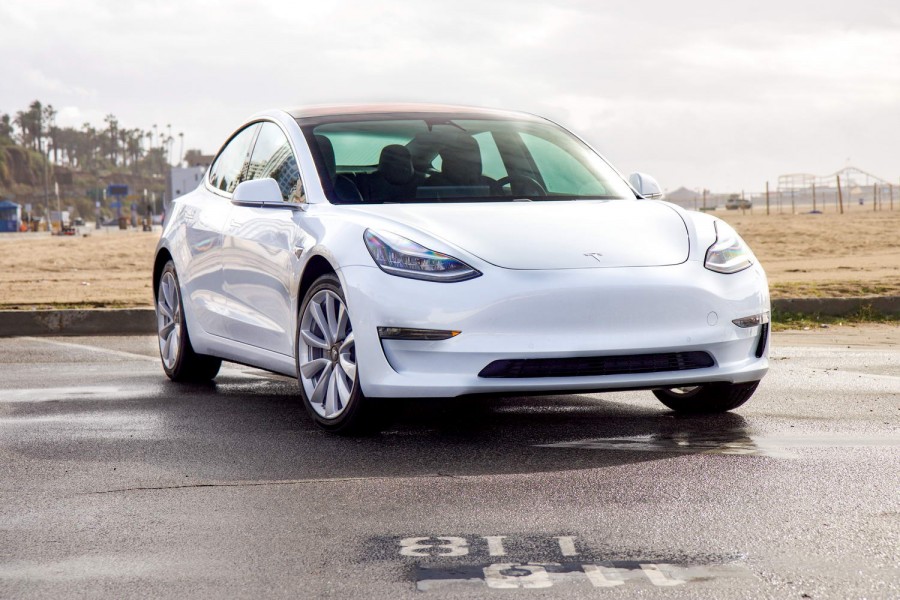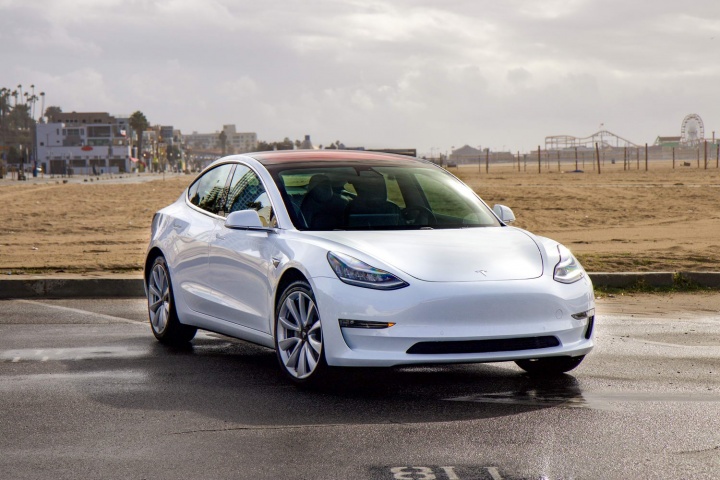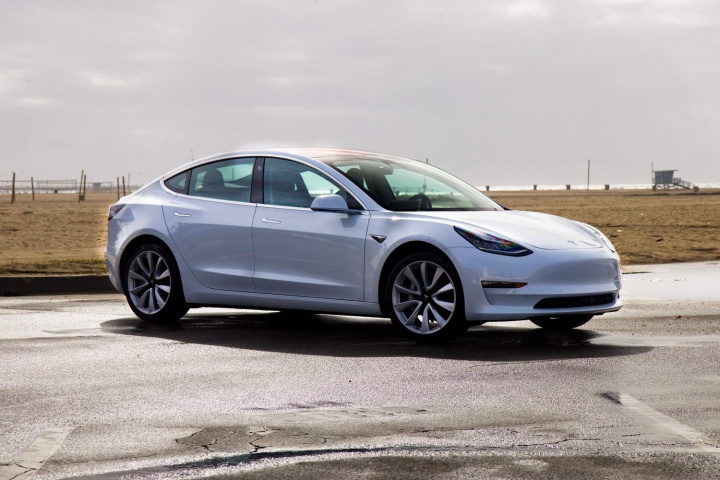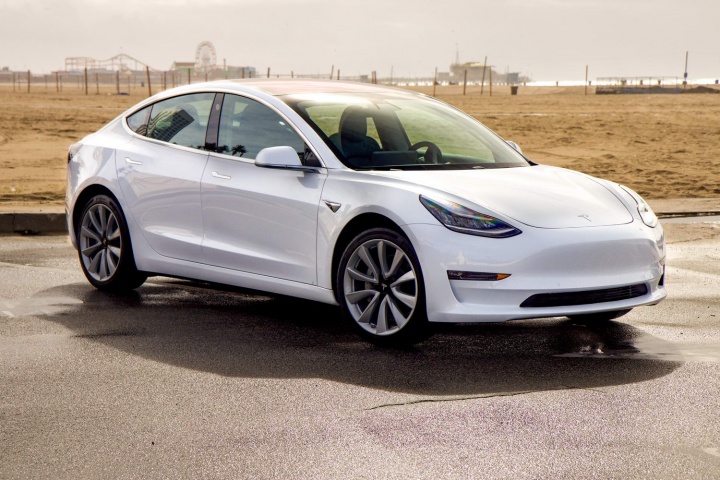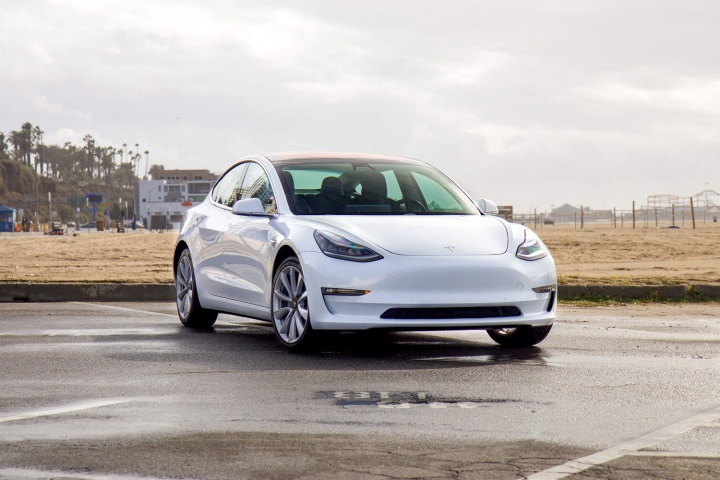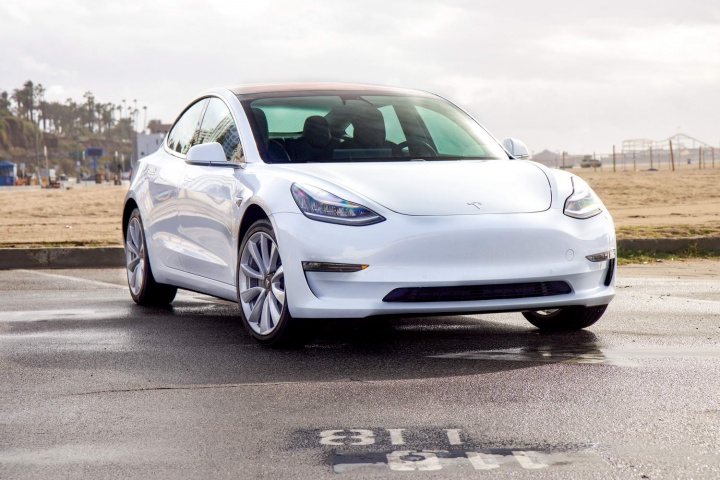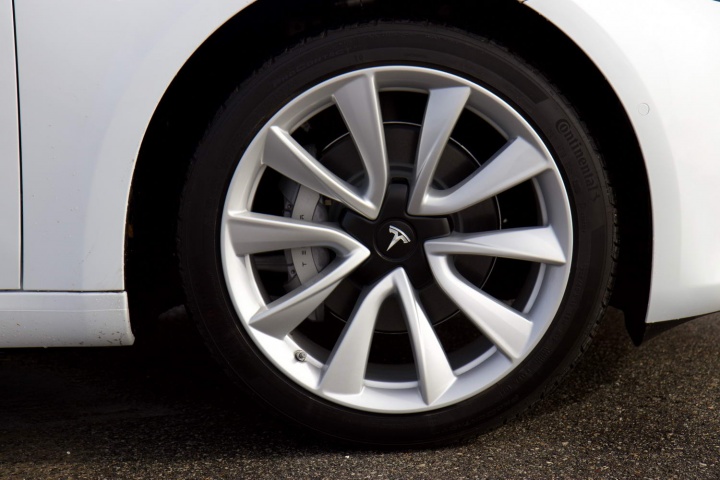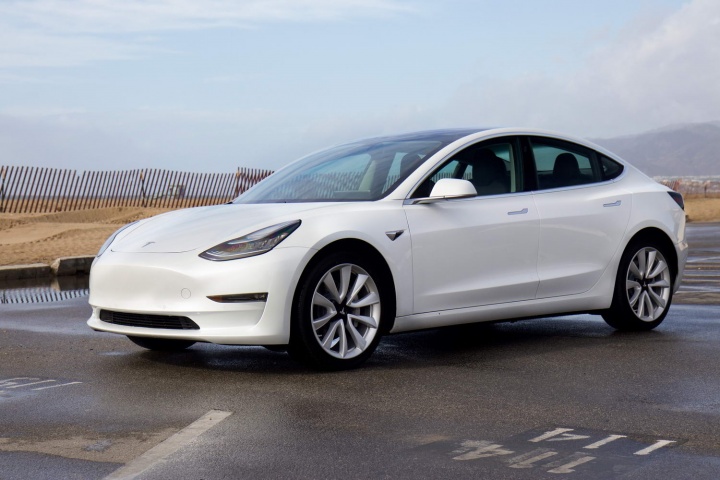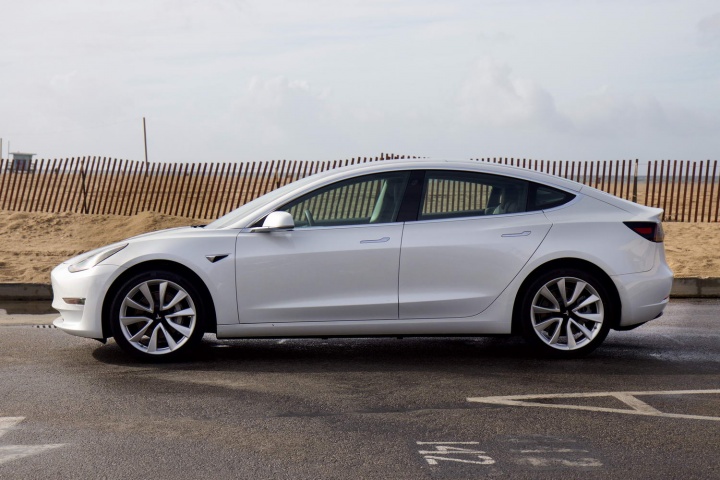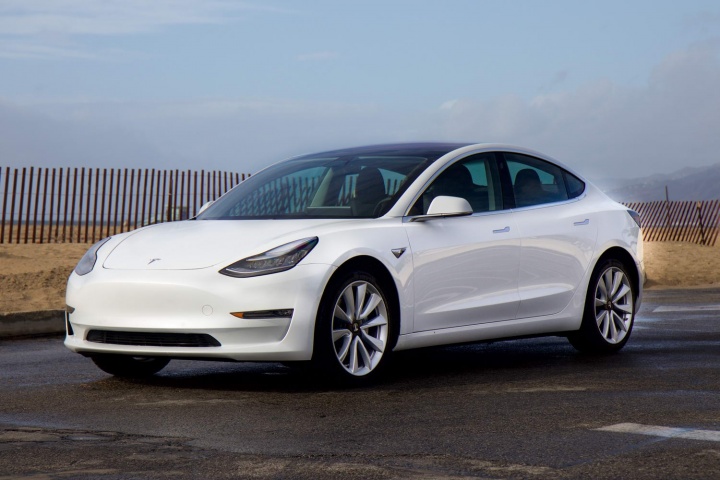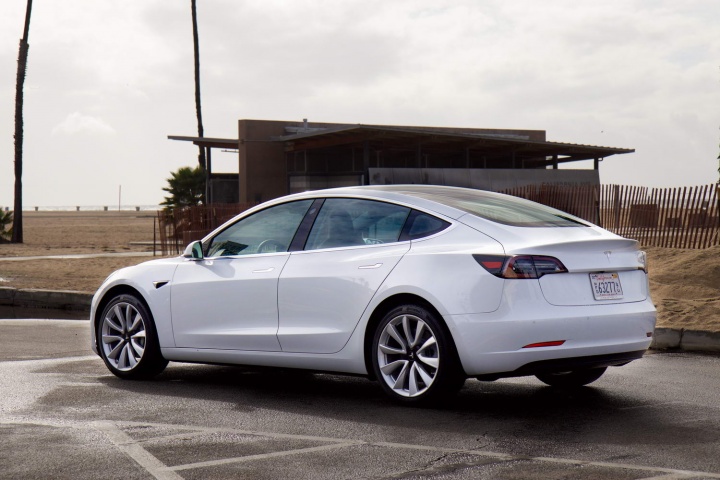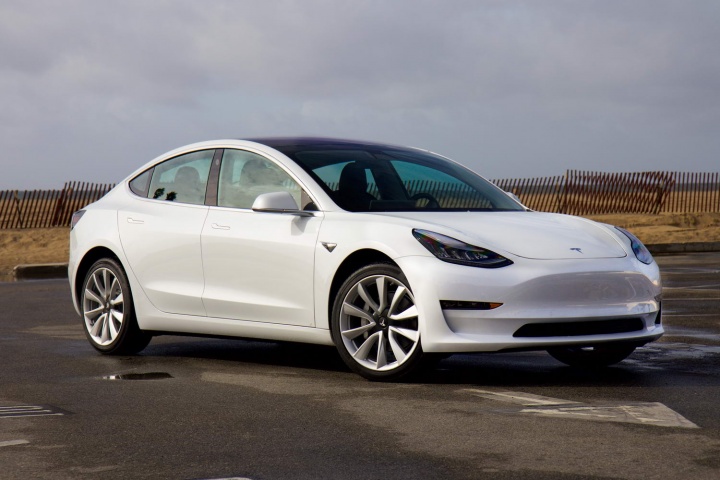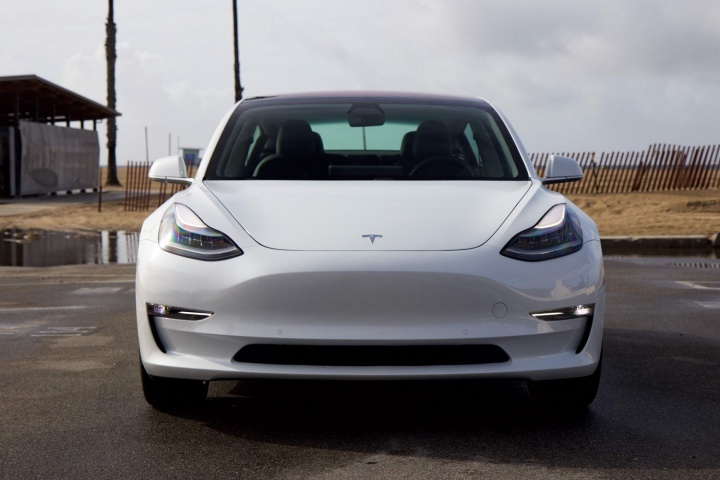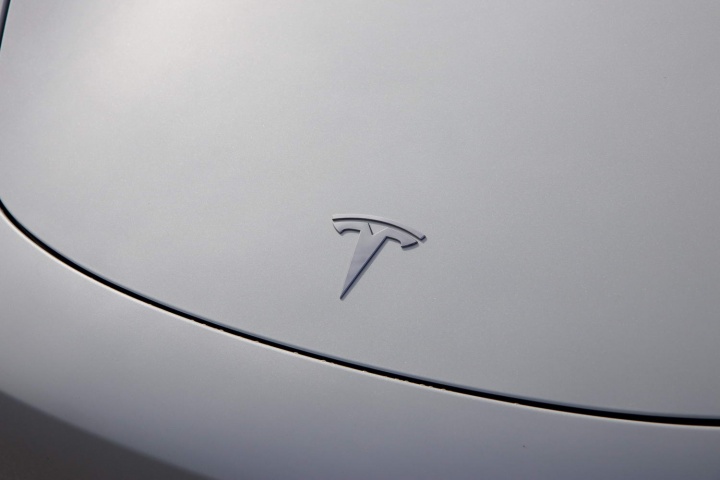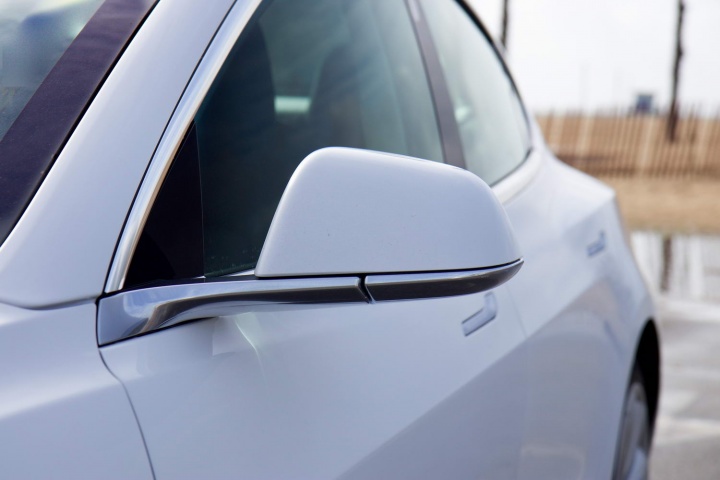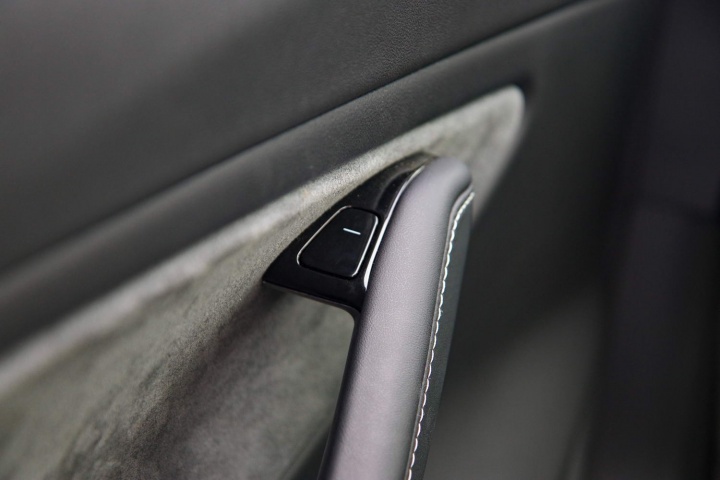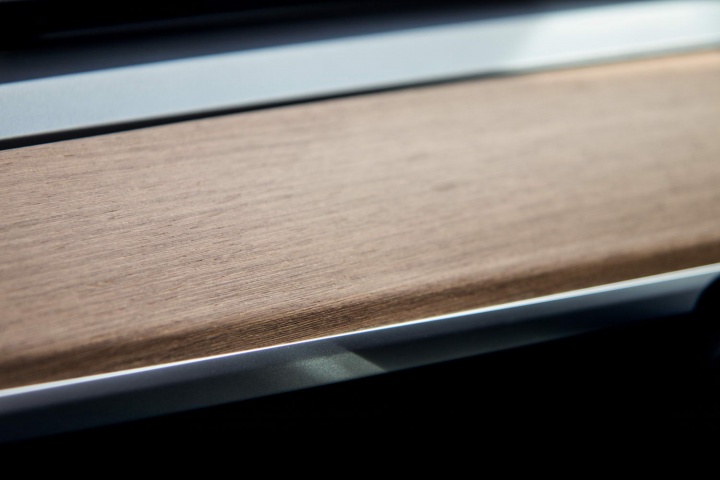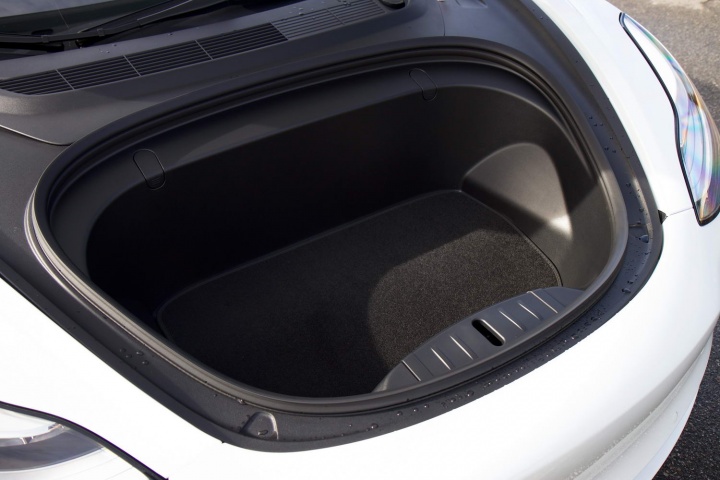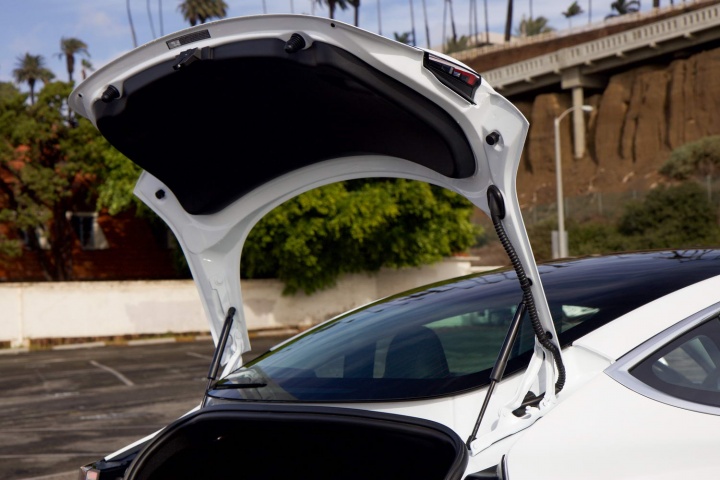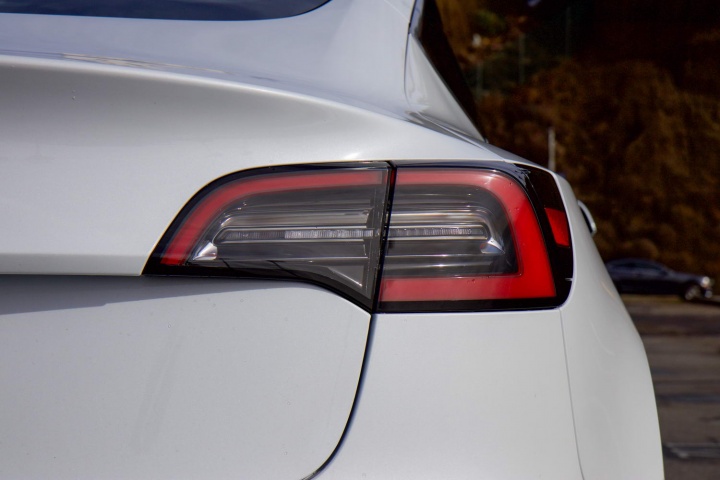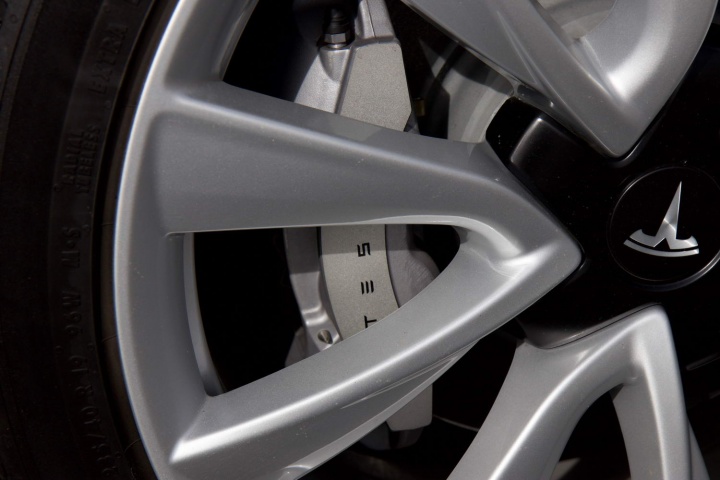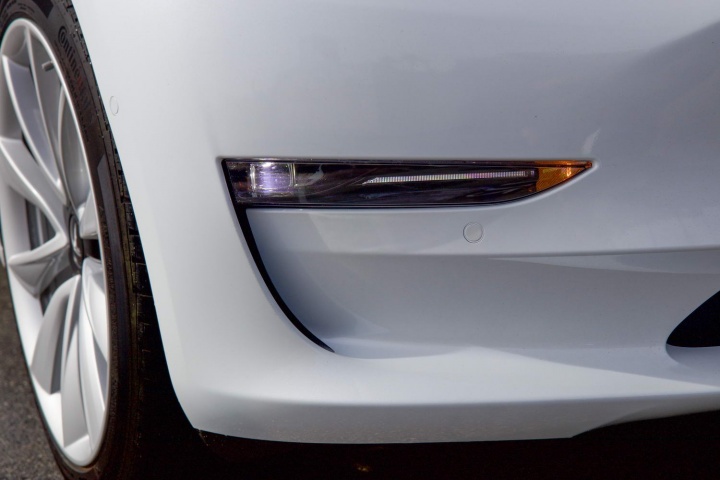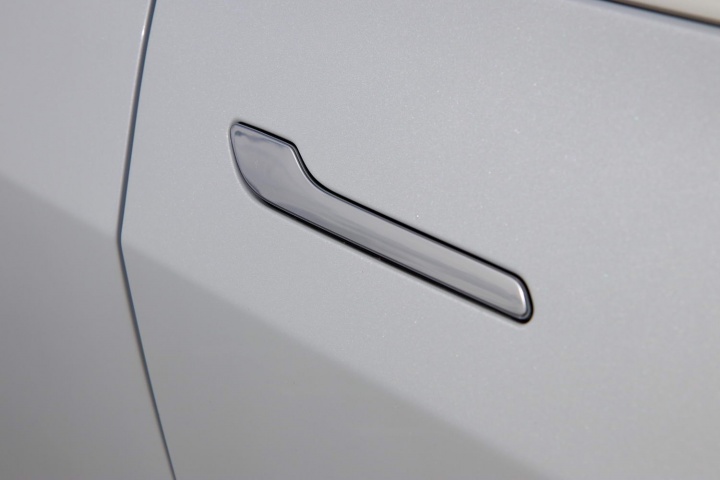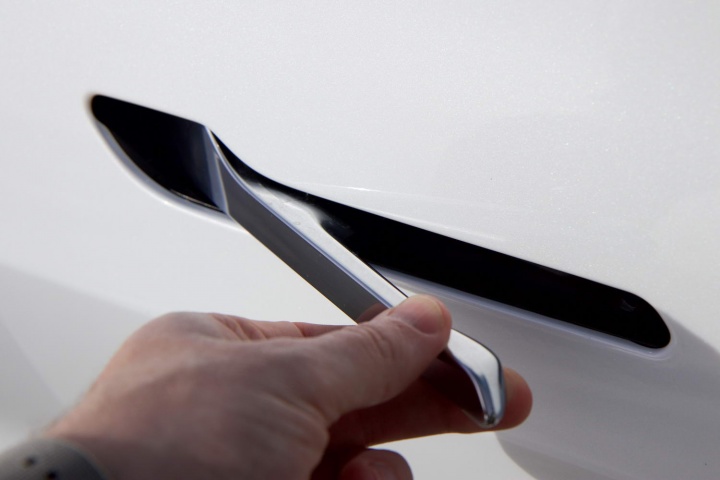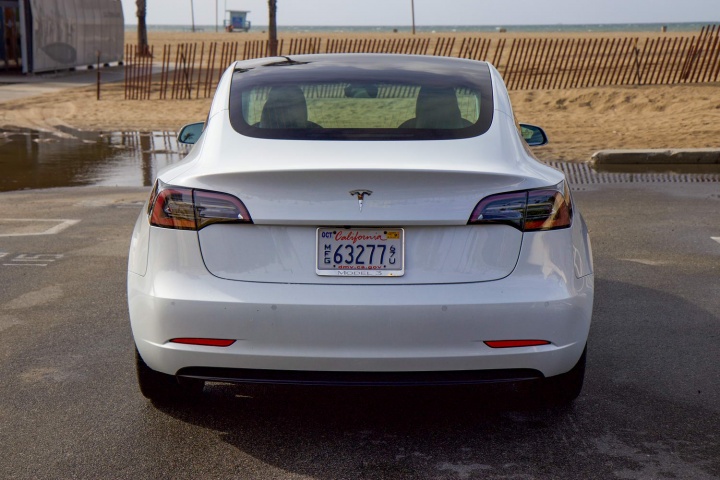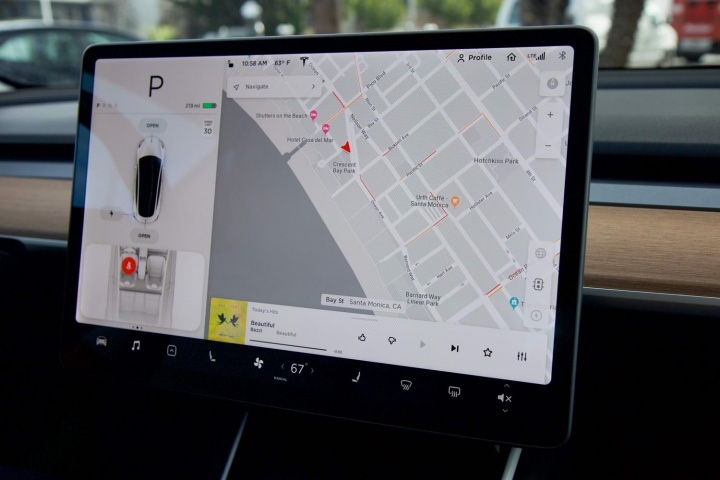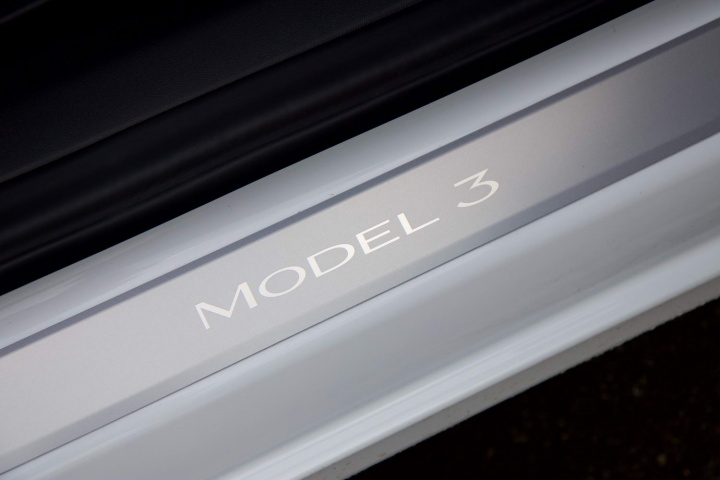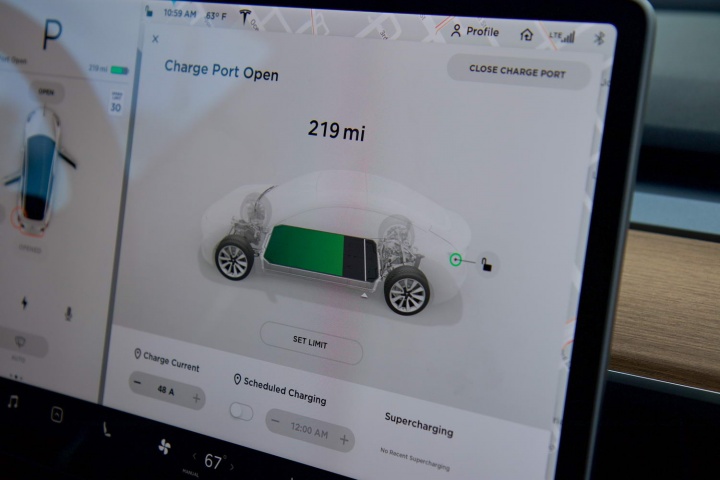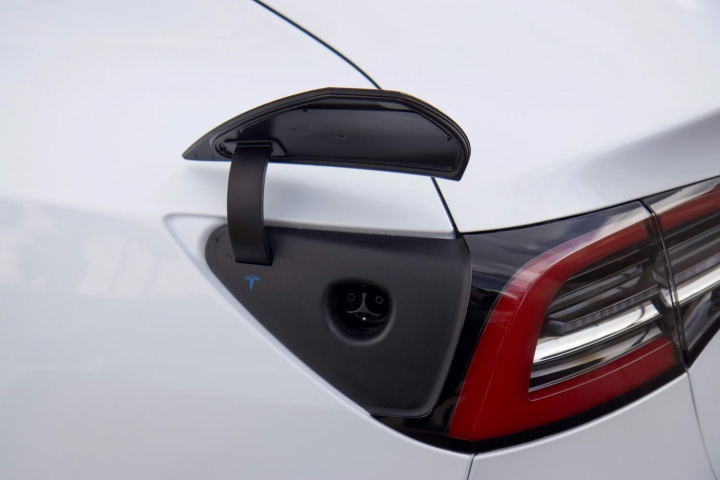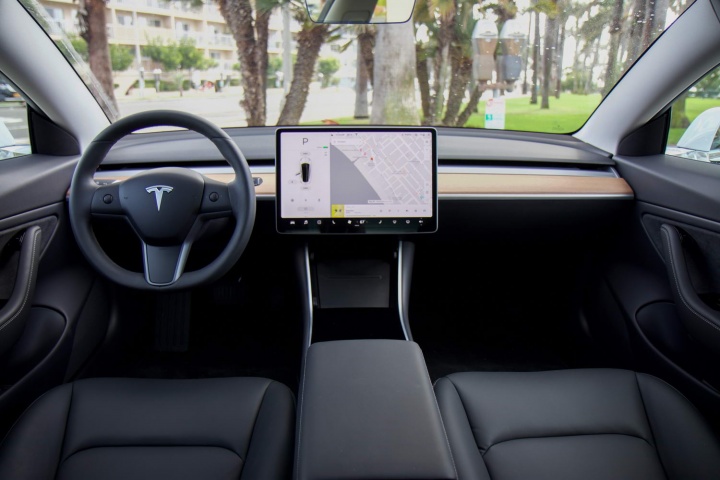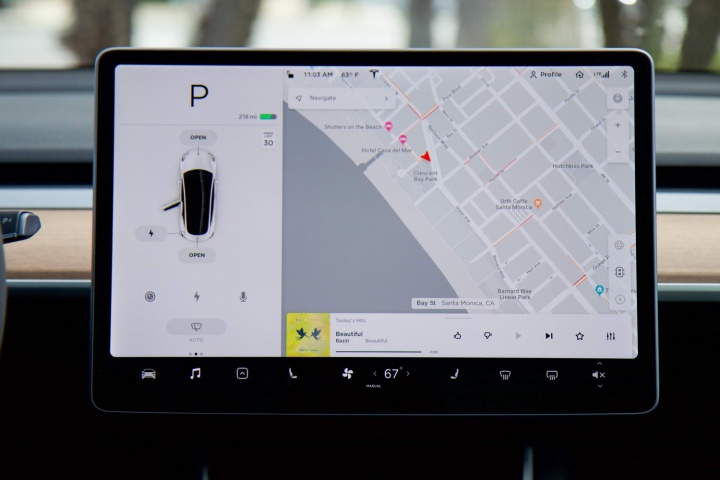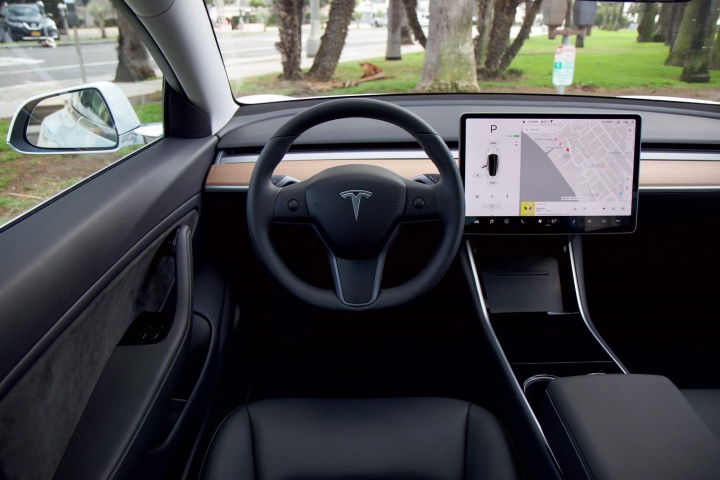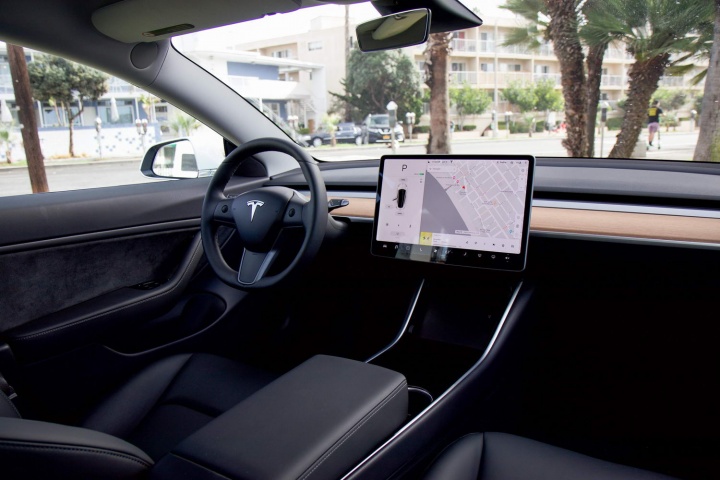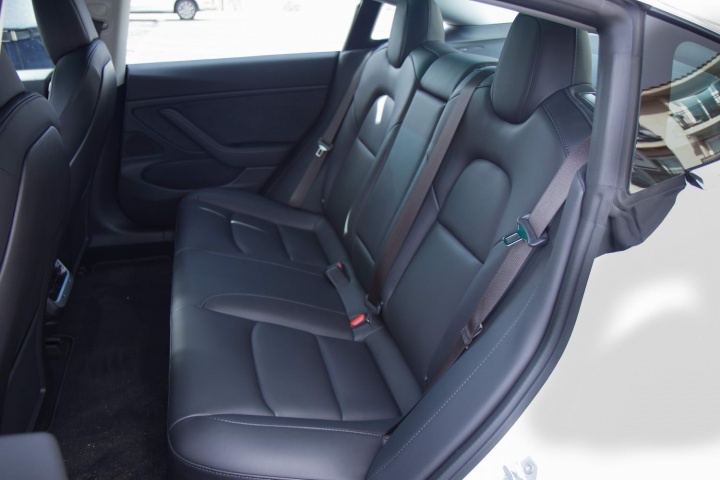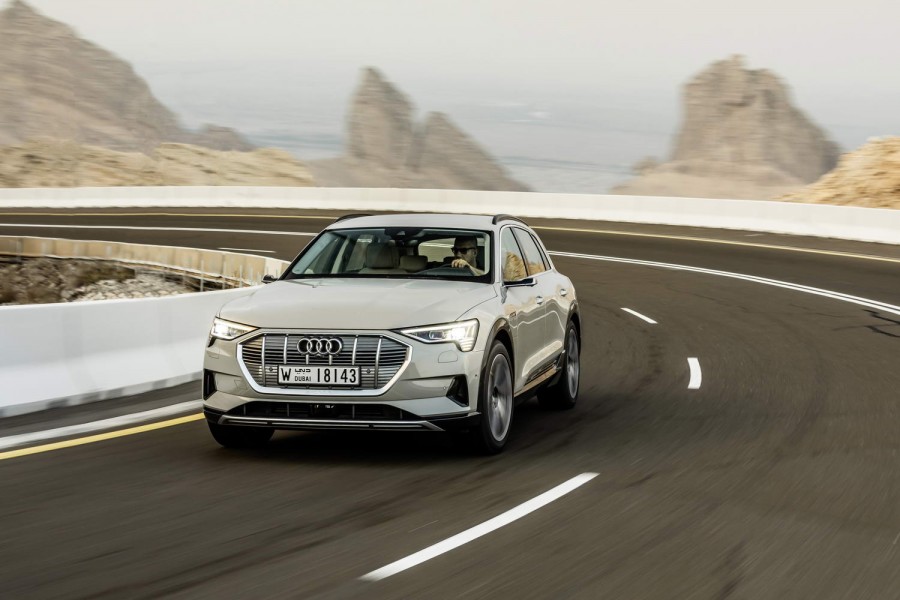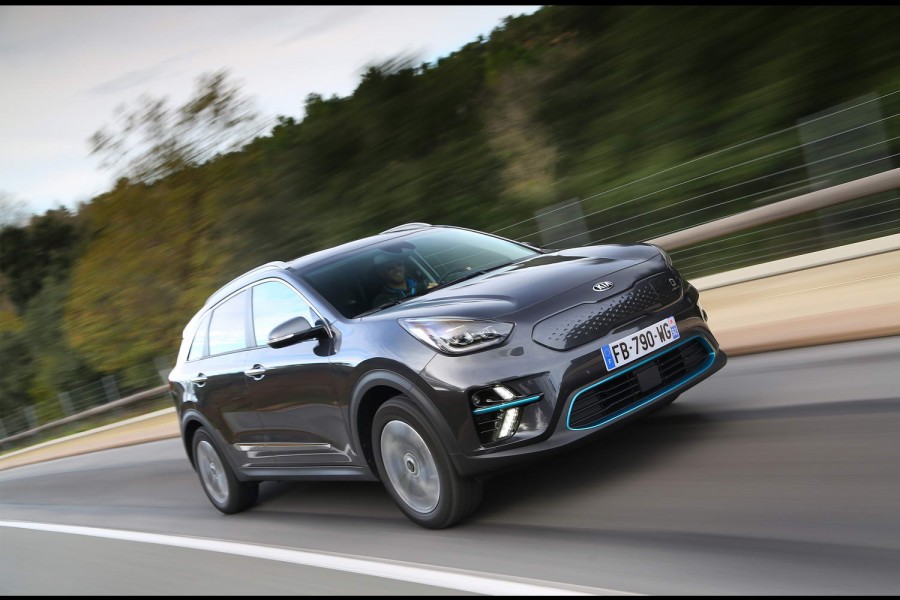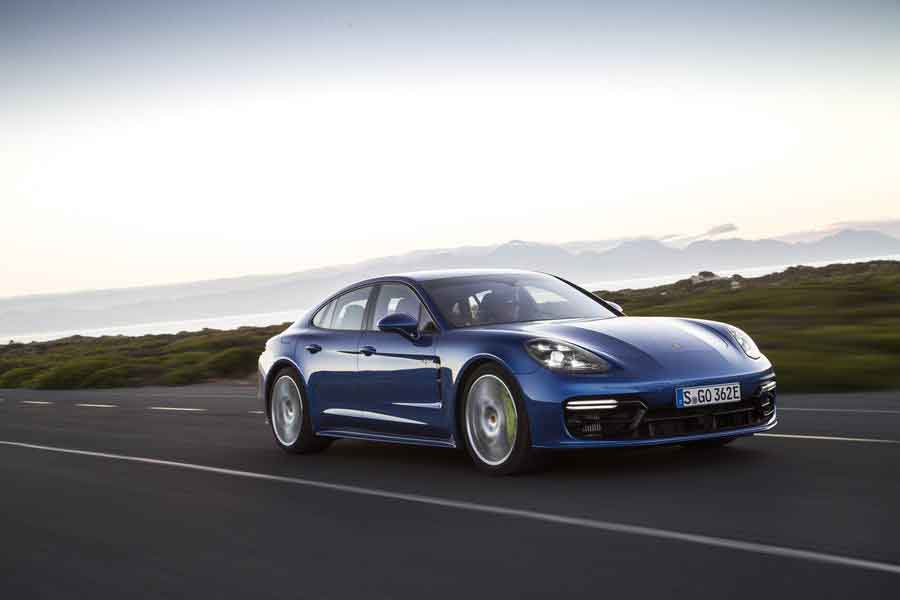Few electric cars have been as keenly awaited as the Tesla Model 3. With phenomenal levels of interest since its launch, can the most affordable Tesla yet deliver and will it be worth the wait?
In the metal
One of the first things you notice as you approach the Tesla Model 3 is its size. In comparison to the Model S, it seems much smaller, partly due to the minimal front overhang and stubby rear-end. While it might resemble a hatchback, it does actually have a separate boot lid that hinges from further up the rear pillars. This setup leaves the opening unobstructed and, at 340 litres, the boot in the back is reasonably sized. As with most electric vehicles, there is an additional smaller boot space in the front, which accommodates 85 litres, bringing the total up to 425 litres, putting it on a par with most mid-size SUVs.
The rest of the Model 3 features a design that is influenced by the need for it to be as aerodynamic as possible. The door handles sit flush against the bodywork, for example and have a polished metallic finish. They do take a bit of getting used to, as you need to press in the larger end with your thumb to release the lever that you then pull outward with your hand. No doubt owners will master it in time.
As there isn't a conventional engine to feed with air, the front is almost entirely blanked off, other than a small intake along the base of the bumper. The upright nose looks a bit more unusual in California where our test car wasn't required to wear a front registration plate, as it belonged to a manufacturer. This Model 3 is the long-range version, which gets 18-inch wheels as standard, with 19-inch wheels available optionally.
Much has been made about the build quality of Tesla's cars, in particular with regard to the bodywork. We did spend time poring over the Model 3 and, while we don't doubt that it had been given a thorough inspection prior to us taking it, we couldn't find fault with it. Aside from the door not shutting with the premium thud of an Audi or BMW, it is as good as anything we've seen from Tesla to date, and notably better than our past experiences with the two larger models in the range.
Indeed, it's the interior of the Model 3 that is more interesting with its 15-inch display, landscape style, 'floating' on the centre console. As in-car displays go, Tesla is leading the field and not only does this feel extremely well-secured, it has a bright, vibrant display with a high resolution.
The latest operating system makes it easier to operate some functions, namely the climate control, and you can see some nifty animations of exactly what it's doing to help you position the vents - as they are secreted away from direct sight. The highly minimalist design of the dashboard is like nothing else on sale today, and the blend of wood, metal and synthetic leather is Scandi-chic meets Apple cool. The electrically adjustable front seats are heated as standard and provide a good level of comfort and support. It feels spacious in the rear too, thanks in part to the split glass roof that allows light to flood in.
Driving it
Here we're driving one of the last rear-wheel-drive versions, as, by the time the Model 3 reaches Europe, only dual-motor all-wheel-drive cars will be on sale. Nevertheless, it gives it a good impression of what to expect from the Tesla.
Its rear-mounted motor has an output of 283hp, which results in some very healthy performance despite the 1,726kg weight. When the all-wheel-drive versions go on sale, they will have a combined output of 346hp, with a Performance variant upping that to 450hp.
Tesla claims that it takes 5.1 seconds to reach 100km/h from rest, but if anything, it feels faster, though it's not headrest-testing acceleration. Owners probably aren't that likely to be racing away from every red light, after all, as it'll only zap the range, but the tremendous torque does come into its own when overtaking. The power delivery is smooth and linear with no drop off in acceleration right up to the motorway speed limit.
The Model 3 does come with an array of cameras and sensors as part of its Autopilot system. In slow-moving and stop-start traffic it manages everything well, offering you the ability to pre-set distances to the car in front and, of course, speed limit. Other than the visualisation on the display of the vehicles around you, it isn't all that different in use to some of the other adaptive cruise control systems that are now available.
What is more impressive is the ride quality. The Model 3 employs a passive setup, unlike the air suspension found in the larger Model S and Model X. It seems to suit the car well and even over the sharper expansion joints on California's highways, the ride, for the most part, remains smooth. In bends, the Models 3 demonstrates good body control and is quick to change direction, largely thanks to having the bulk of its weight set low in the chassis.
The steering is accurate, and there's a reasonably weighted feel to it, but it doesn't have quite as natural a feeling as a BMW 3 Series, for example, but is better than the equivalent Audi. You do have to remain mindful of the car's weight, as, should you carry too much speed into a bend, it will gradually start to understeer. The powerful energy recuperation does mean that in many instances you need only to lift off the throttle to scrub off the required amount of speed.
As lovely as that 15-inch display is, when driving it can become something of a distraction as you take your eyes further from the road. If there's one thing that the Model 3 is really missing it's a head-up display, though its current dashboard design doesn't appear to provide any way of accommodating such a system.
As a sports saloon, the Model 3 performs well and is indeed as fast as any of the best EVs on sale, while the Performance version will be capable of matching cars like the BMW M4 and Mercedes-AMG C 63 on acceleration.
What you get for your money
We'll have to wait until nearer the car's launch in Europe before local prices are confirmed, but we do know what will be on offer. The Model 3 Long Range Dual Motor will feature all-wheel drive, as will the more powerful Model 3 Performance.
All cars will come with several active safety features including Automatic Emergency Braking, Forward Collision Warning and Side Collision Warning. Owners will receive a complimentary one-year subscription to the satnav with live traffic visualisation. Spotify and other over-the-air updates that are available via Wi-Fi and cellular connection are included, meaning you won't necessarily have to visit a dealership to receive the latest updates for your car - you can have it connect to your home Wi-Fi to download and set it to install overnight while it charges.
Unlike the Model S and Model X, European Model 3s will come with a built-in CCS charge port that will enable them to recharge at public fast charge points in addition to Tesla's own Supercharger network.
Summary
The Tesla Model 3 might not have the gimmicks of the other models in the company's range, such as the Ludicrous mode and Falcon doors, but it is by far the most complete product the American firm has made to date. It is as enjoyable to drive as some of the best electric vehicles, like the BMW i3s, and it balances interior space with quality that seems to be on a par with its European rivals. The ride quality and battery performance are what shine through, which is what will appeal to most buyers.

